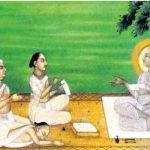Christianity in India: Growth, Challenges & Global Linkages
Christianity in India is among the oldest and most diverse religious traditions in the country, with roots tracing back nearly two millennia. According to popular belief, Saint Thomas the Apostle brought the message of Christ to the Malabar Coast (present-day Kerala) around 52 CE. From these early beginnings, the faith has grown into a vibrant and multifaceted community encompassing millions of believers, thousands of denominations, and a wide network of educational, medical, and charitable institutions. Yet, in today’s India, Christianity finds itself navigating a complex landscape—marked by growth in some regions, challenges in others, and dynamic connections to a global Christian movement.
Historical Roots and Regional Diversity
Christianity’s long history in India has produced unique cultural forms that blend faith with local identity. The Syrian Christians of Kerala, for example, trace their lineage to early converts and maintain distinct liturgical traditions in Syriac and Malayalam. Meanwhile, colonial-era missions during the Portuguese, Danish, and British periods introduced Catholic, Protestant, and Evangelical denominations, which established schools, colleges, and hospitals that continue to shape India’s social landscape.
Today, Christianity thrives most prominently in the southern and northeastern states—Kerala, Tamil Nadu, Goa, Nagaland, Mizoram, and Meghalaya—each with its own expressions of worship, music, and community life. From the candle-lit cathedrals of Chennai to the choir-filled churches of Mizoram’s hills, Indian Christianity is as much cultural as it is spiritual, reflecting the mosaic nature of the nation itself.
Patterns of Growth and Renewal
While Christians make up around 2.3% of India’s population, the faith continues to grow in both number and influence. The northeastern states, where Christianity spread rapidly during the 19th and 20th centuries, now have some of the highest literacy and social development indicators in the country—often credited to missionary education and health programs.
In urban centers like Bengaluru, Mumbai, and Delhi, a new generation of Christians is emerging—professionals, students, and artists who integrate faith with modern lifestyles. Pentecostal and Charismatic movements are also on the rise, emphasizing personal spirituality, worship music, and community service. This energy reflects a broader renewal trend within global Christianity, as growth shifts from the West to Asia, Africa, and Latin America.
At the same time, Indian churches are developing a stronger indigenous theology—one that addresses local realities such as poverty, caste discrimination, and pluralism. This contextual approach allows Christianity in India to be both deeply rooted in Indian culture and globally connected in spirit.
Challenges: Identity, Perception & Freedom
Despite its long history, Christianity in India faces significant challenges. The most visible is the question of religious freedom and identity. In some regions, Christian communities encounter suspicion, allegations of forced conversions, or restrictions under anti-conversion laws. These tensions often arise from misunderstandings and political narratives rather than lived reality. For many Indian Christians, faith is a personal and peaceful path, not a political statement.
Another challenge is representation and perception. While Christian institutions have contributed immensely to education, healthcare, and social reform—serving millions irrespective of religion—this contribution often goes underappreciated. Some rural congregations also face economic hardship, lack of infrastructure, and limited access to modern resources. The digital divide within the Christian community mirrors India’s broader inequalities.
Internally, the Church in India continues to grapple with issues of unity across denominations and the inclusion of marginalized communities, such as Dalit Christians, who still face social discrimination despite conversion. Addressing these internal disparities is key to strengthening the moral and social fabric of the faith.
Global Linkages and Diaspora Influence
Indian Christianity is increasingly intertwined with global networks. The Indian Christian diaspora, especially in the Gulf, North America, and Europe, maintains close ties with home congregations through funding, technology, and exchange of clergy. Online platforms now enable virtual worship, Bible study, and charity coordination across continents.
Moreover, Indian theologians, musicians, and missionaries are contributing to the global Christian discourse—offering perspectives shaped by India’s pluralism and history of coexistence. Indian choirs perform in international forums, and many Indian pastors serve in multicultural churches abroad. This global interaction has made Indian Christianity more outward-looking and dynamic, while still grounded in local realities.
In return, international Christian organizations continue to collaborate with Indian partners in social development, disaster relief, and education—strengthening the bridge between faith and public service. Such linkages ensure that Indian Christianity remains part of a worldwide conversation about justice, peace, and human dignity.
The Road Ahead: Faith and Social Relevance
The future of Christianity in India will likely depend on its ability to remain relevant and rooted. As India urbanizes and digitizes, churches are adopting new technologies for worship, outreach, and youth engagement. Eco-theology movements are encouraging sustainable lifestyles inspired by faith, while interfaith dialogues are fostering mutual respect among religious communities.
At its best, Indian Christianity represents a fusion of tradition and transformation—a faith that sings in many languages, prays in many styles, and serves across boundaries. Its institutions continue to uphold values of compassion, equality, and service that resonate beyond the Christian fold.
Faith in Motion
Christianity in India is not a foreign import but a living tradition woven into the nation’s plural fabric. It has grown through dialogue, adaptation, and service. Today, as it confronts both external pressures and internal reforms, its greatest strength lies in its diversity and global connectedness. Whether through a rural chapel in Nagaland or a modern cathedral in Mumbai, Indian Christianity continues to remind the world that faith, when expressed with humility and purpose, can build bridges of hope in an age of division.
~Religion World Bureau









